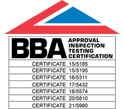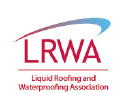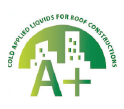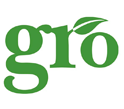Call us on
+44 (0)1268 777871Designing, developing and delivering Green Roofs for Britain’s architects
Proteus Waterproofing is more than just a supplier of Green Roofs - we are your partners in sustainable design – ready to deliver the perfect living roof, every time. We are more than a roofing company - we are leaders in green roof technology – one of the few companies in the UK that offers the total design, development and delivery package for architects and specifiers.Designing, developing and delivering Green Roofs for Britain’s architects
Our commitment to sustainability and design excellence has made us an industry leader in crafting bespoke green roofs that breathe life into urban landscapes while adhering to the highest UK building and fire regulations.
Why choose a green roof from Proteus?
Our expertise encompasses every aspect of green roofing, from detailed design to flawless execution. We offer comprehensive solutions, including the right membranes, insulation, and every other component needed for your next green roof project.
Our experienced design team is ready to collaborate with architects and specifiers to create aesthetically pleasing green roofs that seamlessly integrate with the surrounding environment. Our designs are functional and meet the highest of technical standards to deliver visually stunning solutions for every type of roofing situation.
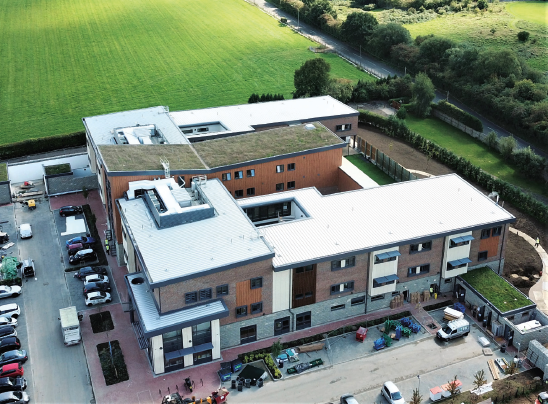
Expert technical support at every stage of your project
Our commitment extends beyond the design, delivery, and installation stage. Proteus Waterproofing continues to offer unparalleled technical support and backup, even after work has finished, ensuring your green roof remains vibrant and functional for years to come. Our team will always be there to address any queries or concerns you might have.
Compliance and safety assurance
Proteus Waterproofing’s green roof design service complies with all current UK building, fire regulations, and Green Roof Organisation guidelines. We put safety first without compromising on creativity, delivering roofs that are as secure as they are practical. For reference, we summarise all current and relevant building regulations as they apply via this link.
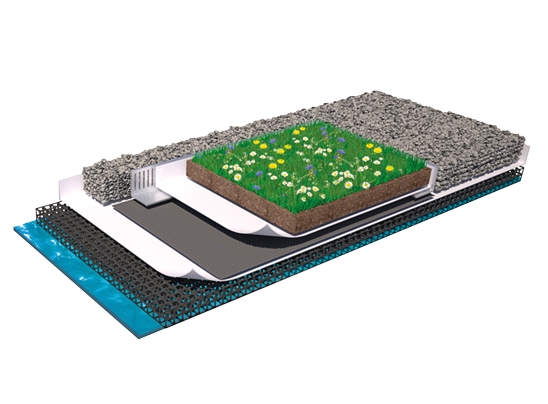
Environmental benefits
Green roofs act as natural insulators, reducing energy costs and enhancing air quality by absorbing pollutants, providing habitats for bees, birds, and other urban wildlife and mitigating the urban heat island effect, to create a healthier environment. Let our experts advise you as to how your next green roof can be even greener.
Improved air quality
By absorbing pollutants and releasing oxygen, green roofs also play a vital role in purifying the air we breathe, creating a healthier environment for everyone.
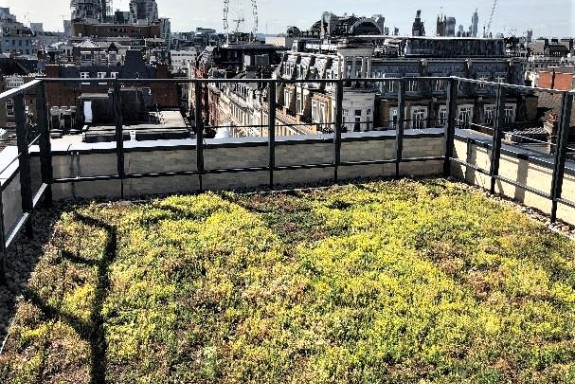
Energy efficiency
Green roofs act as natural insulators, minimising the need for artificial heating and cooling. This not only lowers energy bills but will also reduce your carbon footprint. Combined with the right levels of insulation, as recommended by our technical team, your next green roof project can make a real contribution towards mitigating climate change.
Sustainable urban development
Green roofs contribute to sustainable urban planning, mitigating the heat island effect, and research has shown that they help foster a sense of community and well-being among those that live and work in those buildings.
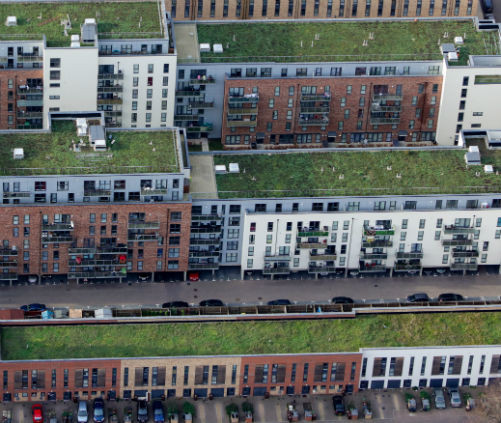
View our Green roofs products
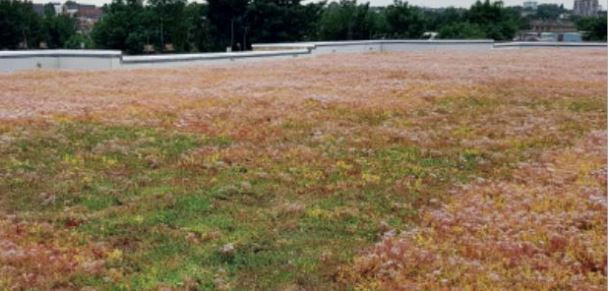
Pro-Living®
Proteus Waterproofing offers a range of green, brown and blue roofs. Pro-Living® roofs can provide ecological benefits, offering an effective and practical use of space.
FAQs
-
What is a green roof?
A green roof is a roof that is partially or completely covered with vegetation and a growing medium. Green roofs can be installed on new or existing buildings, and they offer a wide range of benefits, including:
- Green roofs can help to insulate buildings, reducing the need for heating and cooling
- Green roofs help to filter pollutants from the air, improving air quality for everyone
- Green roofs absorb rainwater, reducing stormwater runoff and flooding
- Green roofs provide habitat for birds, insects, and other wildlife, increasing biodiversity
- Green roofs help to protect roofs from the elements, extending their lifespan
-
Are green roofs good for the environment?
Yes, green roofs contribute positively to the environment. They help to improve air quality, reduce stormwater runoff and increase biodiversity.
-
Can a green roof be installed on my existing building?
Yes, a green roof can be installed on most existing buildings. However, it is important to have your roof inspected by a qualified professional to ensure that it can support the weight of a green roof.
-
How long does it take for a green roof to mature?
A green roof may take up to two years to fully mature. However, you will start to see benefits such as reduced energy consumption immediately.
-
How much does a green roof cost?
The cost of a green roof will vary depending on the type of green roof, the size of the roof, and the materials used. Generally, extensive green roofs are more cost-effective compared to intensive green roofs.
-
How much maintenance does a green roof require?
Extensive green roofs typically require low maintenance, typically only needing to be watered and inspected once or twice a year. Intensive green roofs require more maintenance, similar to a traditional garden.
-
What are the benefits of having a green roof?
There are many benefits to having a green roof, such as:
They can help to insulate buildings, reducing the need for heating and cooling. This can lead to significant energy savings
They help to filter pollutants from the air, improving air quality
Green roofs absorb rainwater, reducing stormwater runoff and flooding. This can help to protect property and infrastructure from damage
They provide habitat for birds, insects, and other wildlife, increasing biodiversity. This can make urban areas more liveable and sustainable
Green roofs aid in shielding roofs from the elements, potentially extending their service life. This can save money on roof repairs and replacements
-
What are the different types of green roofs?
There are two main types of green roofs: extensive and intensive.
Extensive green roofs are comparatively lightweight and generally necessitate low maintenance. They typically consist of a shallow layer of growing medium and drought-tolerant plants.
Intensive green roofs are heavier and require more maintenance. They can support a wider variety of plants, including trees and shrubs.


